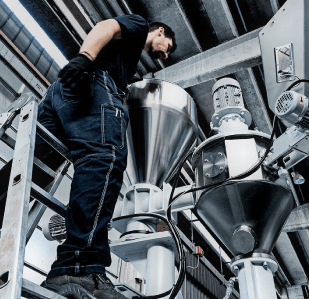Brief summary
In PVC products, CaCO3 is added for two reasons: to reduce the cost and to provide functional properties. Viscosity of PVC compound is important from a processing point of view. It increases with the addition of filler because CaCO3 does not melt during processing. From a product application perspective, elastic modulus is a function of particle shape, while impact strength is a function of particle size and compressive strength is a function of quantity of filler.
Then why there is a tendency among the manufacturers to add more filler? This is because they think this reduces the cost and improves profit
The question is to what extent, in reality, is the cost reduced with regard to expectations, following use of CaCO3?
For this, we must consider both visible and invisible costs. As the calcium carbonate level increases, the specific gravity of the compound also increases, the volume reduces and hence relative cost savings are also reduced. Processors wrongly calculate cost reduction on the basis of weight. It should be calculated on the basis of volume.
Thanks to Mr. YASHODHAN KANADE for his studies on this topic.
We would like to share this analysis with you:
Let’s say that for “X” phr CaCO3, the specific gravity of compound is around 1.47. If 100 kg of material at a specific gravity of 1.47 is required to fill a certain volume, then the quantity of compound with a specific gravity of 1.54 (say “Y” phr) required to fill the same volume = 100*1.54/1.47 = 104.49 kg. This means, an additional 4.49 kg of compound must go into the system to maintain the same volume.
The point to understand is that it is not 4.49 kg of CaCO3, but 4.49 kg of compound. It is important to find out to what extent this reduces the cost.
Suppose compound A contains 8 phr of calcium carbonate and compound B contains 20 phr of calcium carbonate. Then, the cost of compound A = X Rs/kg, will be more than the cost of compound B= Y Rs/kg. If we manufacture the same thickness of pipe from both compounds, then weight W1 of pipe from compound A will be less than weight W2 of the pipe manufactured from compound B.
Since calcium carbonate does not melt at processing temperature, the viscosity of the compound will be higher and flow will be lower. Therefore, the number of pipes manufactured per hour from compound A = N1, will be more than number of pipes manufactured per hour from compound B = N2.
The cost of pipes per hour from compound A and B will be: Rs. X x W1 x N1 and Rs. Y x W2 x N2 respectively.
They can be compared in practice to see the difference.
Then why should we add CaCO3? What are the advantages of CaCO3 use?
- It offers surface smoothness if particle size is finer.
- It reduces shrinkage and provides dimensional stability.
- It is thermally stable during processing.
- It offers impact resistance if used at a certain level [8 phr].
- It improves flow ability [8 phr].
- Refractive index 1.66 offers translucency at a low level.
- Lower extrudate expansion and higher melt viscosity aid in downstream calibration of profile and cools faster.
- Used up to 20% (wt) depending on requirement of end use [SWR or low-pressure pipes]. 100–150 phr used in floor tiles.
- Improves hardness and compressive strength.
CaCO3 use does not result in cost reduction without sacrificing quality and damage to process equipment.



_5f11600a7f791.jpeg)


